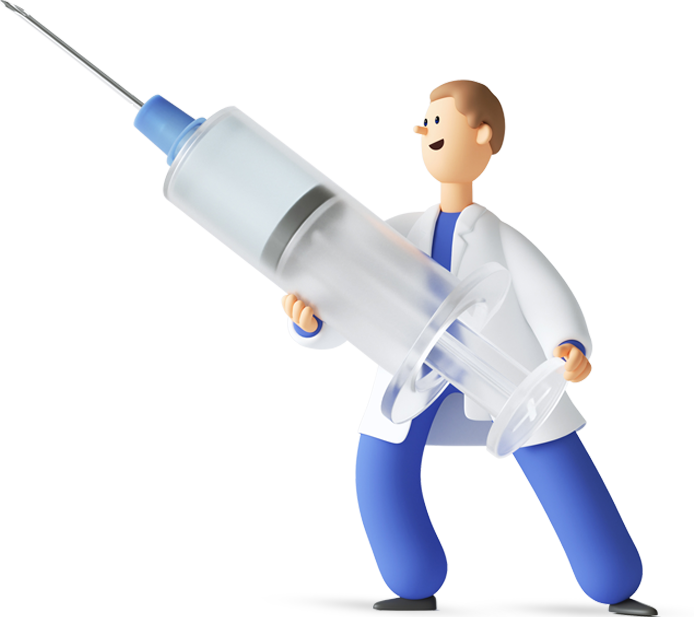

Cupping
Cupping involves placing round, glass suction cups on specific areas of your body. This ancient healing practice offers benefits such as improved blood circulation, detoxification, relief from pain and muscle tension, and improves scar appearance. Enhance your acupuncture or massage treatment by incorporating cupping for greater results, or book a standalone session. Please note that cupping can leave marks on your skin for a few days after the treatment but these go away.
How does cupping therapy work?
Suction from cupping draws fluid into the treated area, expanding and breaking open tiny blood vessels (capillaries) under your skin. This process stimulates healthier blood flow, promoting proper healing at a cellular level. Some believe that cupping releases toxins due to this effect.
Recommended for:
Back pain, neck pain, knee pain and shoulder pain,
Arthritis,
Asthma and other breathing issues,
Gastrointestinal (GI) disorders like irritable bowel disease (IBD),
Headaches and migraines,
High blood pressure (hypertension).
Pricing
£15.00 per session
Duration
20 mins
Benefits
Reduces pain and inflammation
Decreases muscle tightness
Improves blood flow
Increases range of motion.
Our approach to Rehabilitation at Body Boost Clinic
Rehabilitation provides a vital role in pain relief and recovery from fractures, surgery, age-related conditions and muscle, tendon and ligament injuries. But you don’t have to be injured to benefit from physiotherapy; it’s just as valuable as a preventative measure, and is highly recommended for athletes, physical performers or anyone that struggles with pain in everyday life.
Exercise Prescription
The primary method we use to rehabilitate injuries is precise, individualised exercise prescription which addresses any associated weaknesses or imbalance. We also design our exercise prescriptions to reduce the risk of further injury, and it is recommended not just for rehabilitation but prevention as well. If you have any results out of the normal range we recommend you consult a doctor just to be sure that everything is ok.

FAQ
What should I expect during a cupping treatment?
Cupping is sometimes performed with acupuncture treatments. For best results, you may also want to fast or eat only light meals 2 to 3 hours before your cupping session.
During a cupping treatment, you can expect the following:
-
1.Your practitioner will ask you what symptoms you’ve been experiencing, likely taking a detailed health history if this is your first time visiting them.
2. The practitioner will place cups on your skin.
3.You’ll feel a sucking sensation and pressure as the cups are suctioned. The practitioner may use heat or suction alone to place the cups.
4.Depending on the type of cupping, the practitioner may leave you to rest for a few minutes before they return to remove the cups.
5. Your skin may turn red and show light bruising after your session.
Is cupping painful?
If performed by a licensed practitioner, cupping shouldn’t be painful. It may cause temporary bruising (known as ecchymosis), swelling or soreness, depending on the person or amount of cupping treatment done. The spots left behind typically fade after several days or a week. Some people have reported side effects, including feeling lightheaded or dizzy and experiencing flu-like symptoms, like nausea and body aches.
What are the pros and cons of cupping?
Cupping may help reduce pain, but the evidence isn’t very strong. “There are several purported benefits of cupping that include reduced pain, muscle tightness and inflammation, improved blood flow (circulation) and increased range of motion, yet there is very little data or high-quality clinical research to support these claims,” Ebinger said. There are very few risks of cupping but be aware cupping can leave behind those hickey-like bruises on your skin and may worsen eczema or psoriasis. There is also a small risk of skin infection, especially if wet cupping is involved.
Should I get cupping therapy?
Even if considered safe, cupping isn’t for everyone. Because researchers know so little about cupping’s effects on pregnancy, you shouldn’t have cupping therapy if you’re pregnant. You should also avoid cupping if you have:
-
Anemia.
A pacemaker.
Bleeding disorders like hemophilia.
Blood clotting problems, like deep vein thrombosis (DVT) or a history of strokes.
Cardiovascular disease.
Skin conditions, including eczema and psoriasis.
Seizures (epilepsy).
Even though cupping therapy carries a low risk of complications, it’s not for everyone. Talk to your healthcare provider before trying cupping or any other alternative medical treatment.









